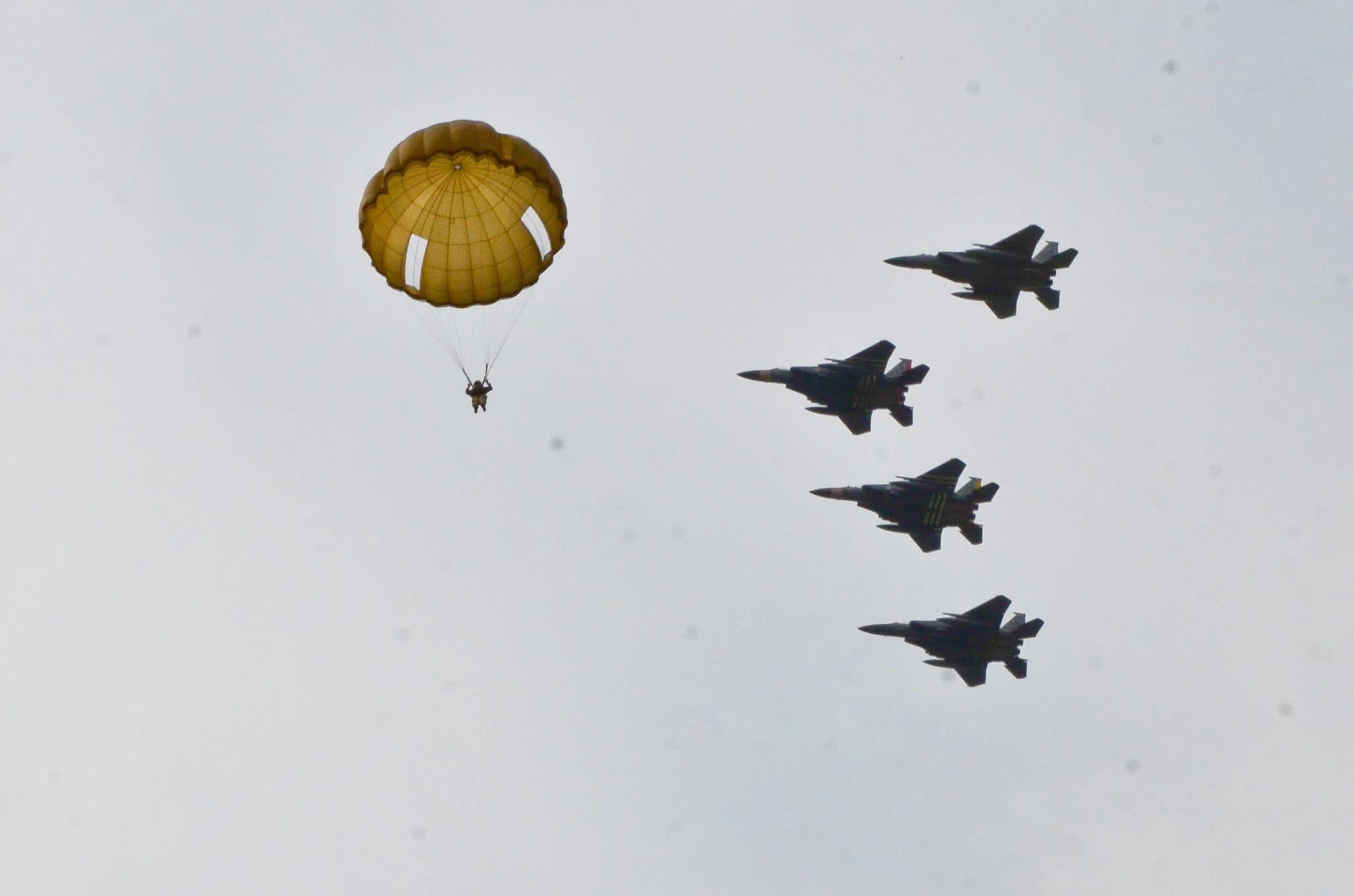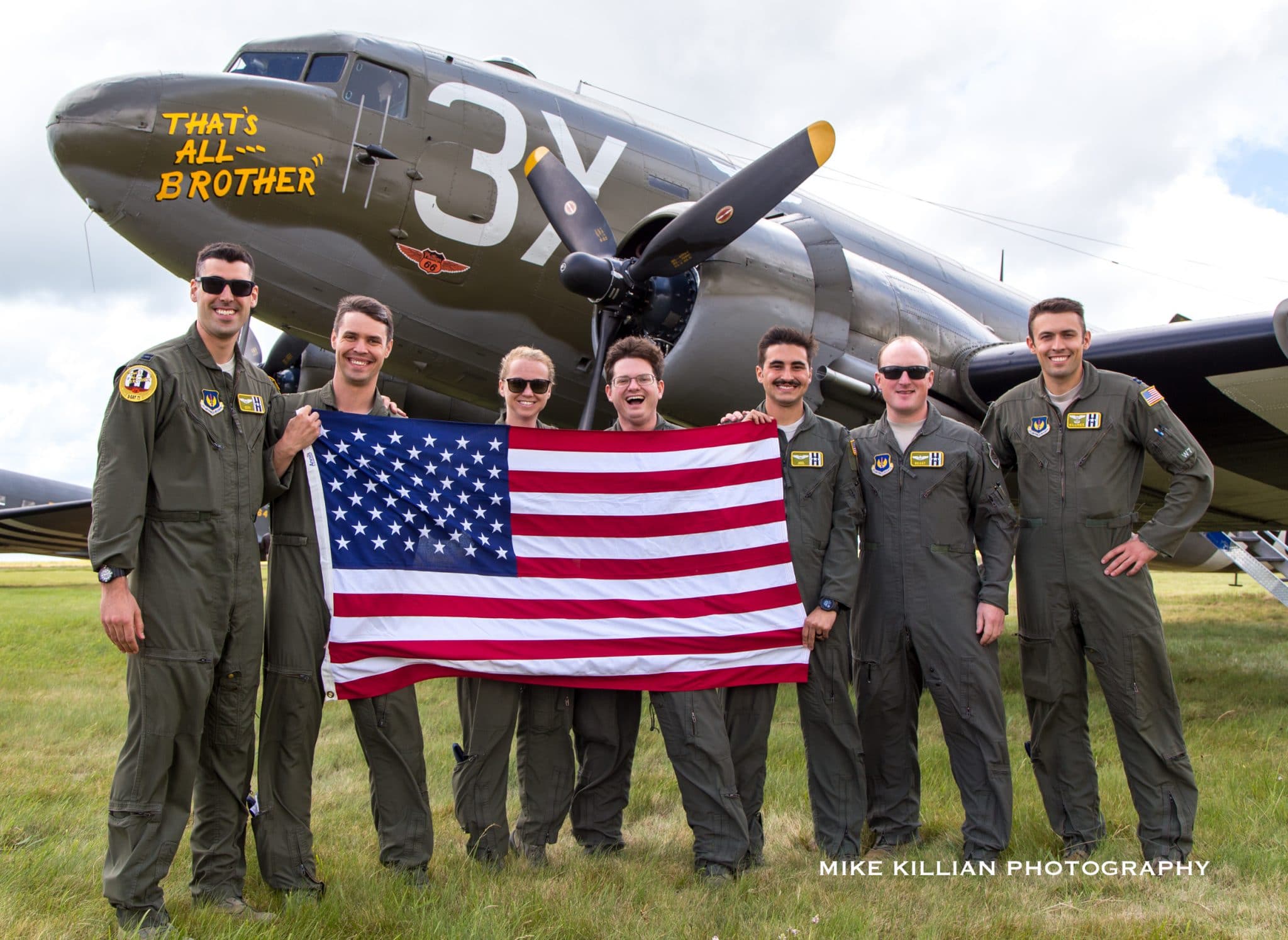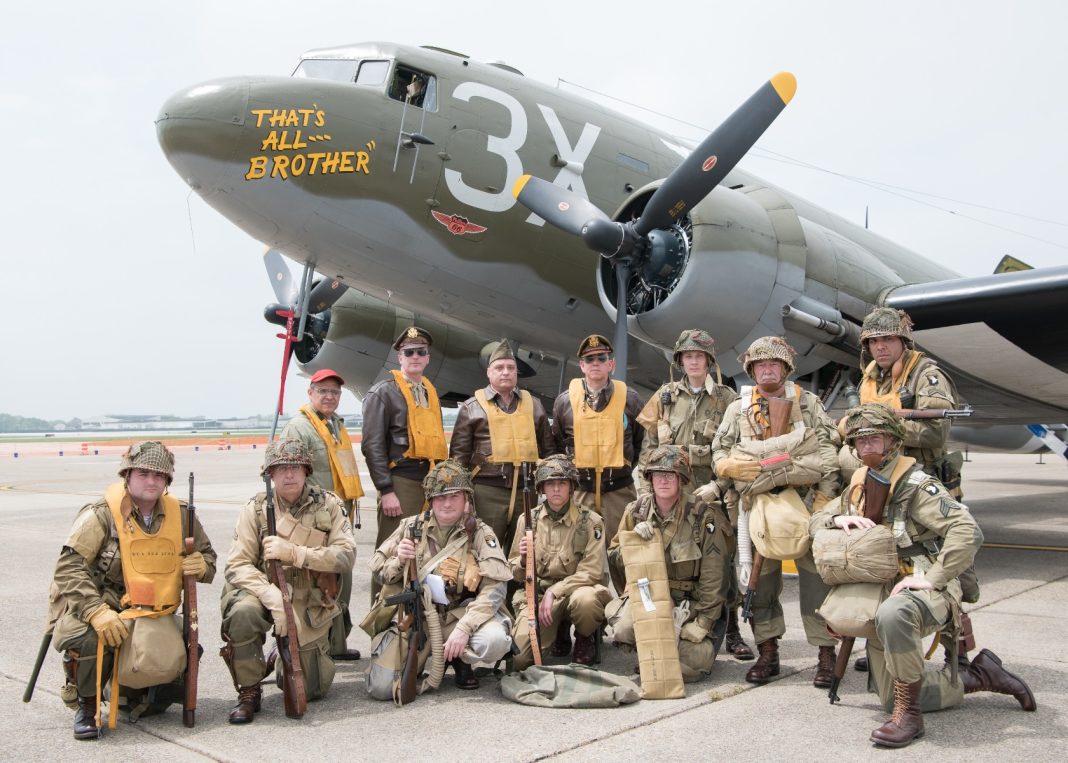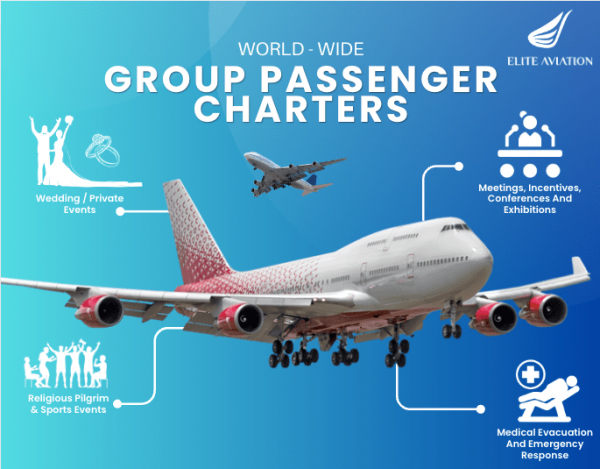[ad_1]

This past June marked the 75th anniversary of the D-Day invasion, where on 6 June 1944, the United States and allies from Canada and Great Britain stormed 50 miles of heavily fortified coastline along Nazi-controlled Normandy, France, to begin the liberation of Europe from Hitler’s power.
Over 150,000 men on the Allied side took part in what remains the largest combined naval, air, and land operation ever staged in the history of warfare. Over 10,000 aircraft and over 7,000 seaborne vessels were used on the Allied side; then Supreme Allied Commander Dwight D. Eisenhower called it the “Great Crusade” to free Europe and the world at large from the grip of Nazism.

But in the hours of darkness leading up to the main seaborne invasion, an armada of nearly 900 C-47 transports, referred to as ‘Dakotas’ by the commonwealth, flew over 20,000 paratroopers and tons of supplies from England to Normandy and dropped them all behind enemy lines, facing heavy cloud cover and intense enemy gunfire in an effort to capture key sites behind the beaches, cut off German resupply routes and reinforcements, and secure the flanks of the assault areas.
They captured vital roads and bridges, allowing the seaborne troops to advance rapidly. They neutralized German artillery positions and also provided critical reinforcements of manpower, equipment, ammunition, and other supplies as the invasion commenced.
In total, 14,674 sorties were flown on D-Day among the Allies, with 127 aircraft lost. While the invasion’s success changed the course of history in countless ways, it came at a terrible cost. 13,000 American paratroopers jumped into Normandy. Two thousand five hundred were either killed, wounded, or missing by the end of D-Day.
Overall, the Allied side suffered 10,000 casualties, including 2,500 American and nearly 2,000 British and Canadian troop casualties on the first day of the Battle of Normandy, which by the end would see over 50,000 Allied ground troops and air forces killed in action, with figures on the German side similar. It is believed that 15,000 – 20,000 French civilians died in the battle as well, primarily resulting from Allied bombing.
The 2019 D-Day Squadron: A Historic Commemoration
This year, to honor those who gave all on D-Day and pay tribute to the few veterans still alive, America’s D-Day Squadron flew 15 restored Douglas DC-3 and C-47 Skytrains (the military version of the DC-3) from the United States to Europe to honor the 75th anniversary, in a series of symbolic mass flyover commemorations not likely to ever be seen again.
The planes, many of which are storied World War II and D-Day combat veterans, are all privately owned by various organizations. The massive undertaking was coordinated and led by the non-profit charitable Tunison Foundation and its D-Day veteran C-47, ‘Placid Lassie,’ commanded by chief pilot Eric Zipkin.
They planned it for years, coming from across the U.S. and joining together at Oxford-Waterbury Airport in Connecticut on 19 May to begin their journey east across the North Atlantic. They were equipped with life rafts, survival suits, and extras of everything that may be needed as they flew the vintage aircraft on the original Blue Spruce route.
Along the way, they stopped to refuel at Goose Bay Airport (CYYR) in Newfoundland, Canada, Narsarsuaq Airport (BGBW) in southern Greenland, Reykjavik Airport (BIRK) in Iceland, and Prestwick Airport (EPIK) on the Western coast of Scotland before making the final leg to Duxford Airfield (EGSU) north of London.

Such a journey for such old aircraft is already an impressive accomplishment as it is, but for the D-Day Squadron it was just the beginning. Their first official Normandy flyover came on June 5, where they joined Daks Over Normandy and departed the Imperial War Museum Duxford together under overcast skies, as thousands of spectators waved and cheered wishing them good luck.
The formation, led by Placid Lassie, headed south for France, conducting flyovers across England first at Colchester, Southend-On-Sea, Maidstone, and Eastbourne. The unmistakable skyline of London appeared to our west as we crossed the Thames Estuary near Sheerness. We then arrived over southern England’s legendary white cliffs and headed out over the English Channel.
The mood in the sky was palpable. You could feel the emotion, excitement, and honor as the more than 30 planes pushed for the shores of France together, the same as their counterparts did 75 years earlier. I was honored to fly in a Beech 18 with Phil and Allie Dunnington, piloted by Andrew Holman-West, as Harvards and Mustangs flew ‘top cover’ escort for the massive formation.
As the shores of Normandy came into view, the excitement increased; it was almost time for years of planning to pay off as the formation approached their first French flyover at Le Havre. Thousands of spectators lined the streets and the famed Pegasus Bridge as 250 jumpers began pouring out of the Dakotas at Sannerville Drop Zone ‘K,’ as French locals welcomed them all with gifts, hugs, thank yous, and open arms before the planes landed in Caen to stage for several days of events, including the official 75th commemorations scheduled the following day.
It was an incredible sight to see so many combat veteran Dakotas together–something that had not been seen in the skies over Normandy since D-Day and will probably never be seen again.
Honoring Veterans and Recreating History
A few D-Day veterans joined the D-Day Squadron’s flight to Normandy as well, including 97-year-old Tom Rice, a veteran of the 101st Airborne Division who tandem-jumped into Normandy from one of the C-47s, and Lt Col Dave Hamilton, who flew as a Pathfinder pilot on D-Day, flying this time with D-Day Squadron and the Historic Flight Foundation’s DC-3′ Pan-Am Airways’.
Both U.S. President Donald Trump and French President Emmanuel Macron were in attendance for the official 6 June events, along with 60 World War II veterans. The D-Day Squadron flew 12 aircraft in a mass formation from west to east, sharing the sky with the U.S. Air Force and French Air Force, each conducting their own flyover tributes throughout the day.
“One of the primary goals of our efforts was to honor the veterans of the Greatest Generation that sacrificed so much so that we could enjoy the freedoms we have today,” says Moreno Aguiari, Director of Marketing and Public Relations for the D-Day Squadron. “It is our sincere hope that this flight was a fitting tribute to those that fought and died 75 years ago, and that those precious few that are still alive today looked to the skies and felt that everyone who took part in one of the most pivotal moments in our history was properly honored.”
The U.S. Air Force 48th Fighter Wing, based at RAF Lakenheath in England, painted three of their F-15E Strike Eagles in individual World War II heritage tribute colors to honor D-Day, one from each of their fighter squadrons, the 494th, 493rd, and 492nd.
Here’s a clearer and more concise version of that sentence:
Inspired by the P-47 Thunderbolt pilots of World War II—who flew countless missions across Europe, including on D-Day—each jet was painted with the traditional World War II markings of the 492nd and 493rd Fighter Squadrons. Back then, the 48th Fighter-Bomber Group and its four squadrons—the 492nd, 493rd, 494th, and 495th—flew nearly 2,000 sorties, dropped approximately 500 tons of bombs, and fired over 160,000 rounds while striking German gun batteries, engaging Luftwaffe aircraft, and protecting ships, landing craft, and troops during the liberation of Normandy.

Each jet was painted with a red and white chequered nose, white and black ‘invasion stripes’ on the wings, and the Statue of Liberty on the tails, but with different tail colors. Unit insignia was also on the fuselage, and the classic national star symbol, also known as an Air Force roundel, was painted under the wings.
For the 75th anniversary, the 48th FW was tasked with two flyover missions of Normandy, a missing man flyover of Omaha Beach, and the American Cemetery on 6 June (with both Presidents of the USA and France in attendance and shown live around the world). Another on 9 June, which was a re-enactment tribute Commemorative Airborne Operation over Sainte-Mere-Eglise, flying top cover for USAF and Allied C-130s and the D-Day Squadron’s C-47s, who together dropped more than 1,100 military and civilian paratroopers.
More than 1,300 U.S. Service Members, along with 950 troops from across Europe and Canada, converged in northwestern France to commemorate the 75th anniversary. Between 1 and 9 June 2019, they participated in around 80 ceremonies in 40 communities in the region.
On 8 June, the D-Day Squadron’s D-Day combat veteran C-47 “That’s All, Brother” participated in a symbolic tribute formation flight with two C-130J Super Hercules aircraft from the U.S. Air Force 37th Airlift Squadron, based at Ramstein Air Base, Germany. ‘That’s All, Brother’ flew as part of the first wave of C-47s dropping men and supplies behind enemy lines on D-Day, and the 37th AS traces their lineage to D-Day as well, where they served as the 37th Troop Carrier Squadron and flew the same C-47 aircraft. Each C-130 was painted in D-Day stripes, too, with a giant ‘W7’ painted on each fuselage in remembrance of the “Whiskey 7” markings they wore on D-Day.
The actual ‘Whiskey 7’ veteran aircraft that flew as the lead ship of the 37th Troop Carrier Squadron, dropping elements of the 82nd Airborne Division near St. Mere Eglise in the early hours of D-Day, still exists today, based at the National Warplane Museum in Geneseo, NY. The plane could not make the trip to Europe for D-Day 75, but did visit for the 70th anniversary.
One of the C-130s served as my ‘photo ship’ to produce the objective imagery of both aircraft together over numerous symbolic landmarks and locations. At the same time, the other C-130 serving in the formation images was painted with the nickname ‘Heyl Yea, Brother’ on its nose in tribute to ‘That’s All, Brother.’
Several servicemen and women who helped organize the 75th anniversary events were honored to fly on ‘That’s All, Brother’ for the mission as well, visibly excited to experience a piece of living history as they now serve actively in the same responsibilities ‘That’s All, Brother’ had in World War II.
After hitting our photo targets over the American Cemetary, Omaha and Utah Beaches, Iron Mike DZ, Pointe Du Hoc, and a few others, ‘That’s All, Brother’ returned to Caen, while our C-130s continued with flyovers across the region for a total of about three hours, providing for an unforgettable and truly special experience on the back ramp, overseeing where so much history occurred 75 years prior (my sincere thanks again to the U.S. Air Force, D-Day Squadron and ‘That’s All, Brother’ crew).

Beyond Normandy: Continuing the Tribute Across Europe
Here’s a clearer and more cohesive rewrite:
Normandy wasn’t the final stop—more tributes and flying awaited across Europe. After the D-Day commemorations, D-Day Squadron crews continued on to other historic events, including the Paris Air Show and the 70th anniversary of the Berlin Airlift in Germany. There, aircraft recreated a “Candy Drop,” joined by the original “Candy Bomber,” Col. Gail Halvorsen. The tribute honored the postwar effort known as Operation Vittles. In 1948, after the Soviet Union cut off Western access to West Berlin, the U.S. and U.K. launched a year-long airlift to deliver food and supplies to the city’s residents.
But one day, when Halvorsen met local children at Berlin’s Tempelhof Air Field, he realized how excited they were just to receive some gum from him. So he promised to drop candy on them on his next flight, wiggling his wings as a signal to the children that it was him. He called it ‘Operation Little Vittles,’ kept his word, and unknowingly kicked off an international effort to get candy to Berlin’s children, and the rest is history.
Flying onboard ‘Placid Lassie,’ Halvorsen even took the controls for 20 minutes following the candy drop, which was attended by still-surviving kids from the original missions in 1948 (along with 33,000 other spectators). Halvorsen even signed Placid Lassie after the flight. Lassie was also joined by ‘D-Day Doll’ as they flew together over Bastogne, Germany, revisiting where they served in the Battle of the Bulge 75 years prior.
Following Berlin, the D-Day Squadron’s planes continued in different directions, some heading home back across the cold North Atlantic, others pressing forward for Venice, Italy to participate in their last official stop at Aeroporto Nicelli (Venezia Lido airport) to honor the airport’s history as the first base of operations for the DC-3 in Italy. The airport also hosted the first commercial DC-3 flight in Italy. The flight attendant who worked on that flight, Mrs. Ivonne Girardello, was taken to the skies once again with the D-Day Squadron to mark the occasion, now 96 years young, flying a DC-3 type aircraft for the first time in 60 years on the ‘Spirit of Benovia.’
In total, the D-Day Squadron’s numbers for the 75th anniversary are beyond impressive. With the support of private donors, volunteers and 45 partners/sponsors, they traveled over 150,000 miles across 8 countries in seven weeks, which included 45,000 miles of open-water flying over the Atlantic, 1,489 flight hours, 644 sorties dropping 800 paratroopers, 22 airports visited, 100,000 gallons of fuel and 683 gallons of oil used, 2.6 million people reached on social media and millions more reached through various TV news coverage and online and print media.
“‘Mission Accomplished’ may seem like an overused phrase, but I’m not sure what else you can say,” declared Aguiari. “There was no one person responsible for this effort. An incredible number of people came together to fly 75-year-old aircraft to some of the most remote locations on the planet, then attended weeks of celebrations honoring the Greatest Generation and their incredible achievements. Then, they made the journey a second time to return home. But it also goes far beyond the pilots and crews, as that only scratches the surface of the logistical support that each aircraft received during every leg of the journey.”

“We could never have accomplished this without the support of our partners and donors,” concurred Lyndse Costabile, Corporate and Donor Relations, for the D-Day Squadron. “Discounted fuel, ground handling, FBO fees, flight gear, event sponsorship, marketing support; the efforts contributed by these organizations were as fitting as the tribute they helped to produce. They came together in a plethora of ways with the same mindset and unified purpose, like so many did 75 years ago.”
Following their return to the United States, several of the aircraft traveled to Oshkosh, Wisconsin, for America’s largest annual air show, the Experimental Aircraft Association’s (EAA) AirVenture, where they flew and continued celebrating this year’s 75th anniversary of D-Day, shared their experiences and hinted at future airshow and education outreach plans. A feature documentary on the D-Day Squadron’s adventure for D-Day 75 is also in the works.
“So ended the Battle of Normandy: an outstanding triumph of air power. It was air power that paved the way into Europe; air power covered the landings and made it impossible for the Germans to concentrate against them; air power maintained interdiction and pressure on the enemy when the ‘master plan’ failed; air power completed the overwhelming victory.” – John Terraine, The Right of the Line: The Role of the RAF in WWII (p. 662)
[ad_2]
Source link


